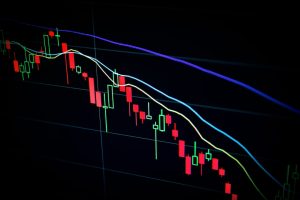Finding a breakout in forex trading can be a profitable strategy for traders. A breakout is a scenario where the price of a currency pair moves beyond a particular level. The movement is usually accompanied by high trading volumes and momentum as traders rush to exploit the new direction. A breakout could happen in any direction, whether upwards or downwards, and it signals a significant shift in market conditions.
In this article, we will explore some techniques that traders can use to identify breakouts in forex trading.
1. Identify Support and Resistance Levels
Support and resistance levels are critical levels in forex trading, as they indicate areas where the price of a currency pair could experience a reversal or breakout. Support is a level where the price of a currency pair has historically found stability, while resistance is a level where the price has struggled to move beyond.
To identify support and resistance levels, traders can use technical analysis tools such as trend lines, moving averages, and pivot points. Once these levels are identified, traders can monitor the price of a currency pair to see if it breaks above or below these levels, indicating a potential breakout.
2. Monitor Trading Volumes
Trading volumes are a crucial indicator of market sentiment, with high volumes indicating significant market interest in a particular currency pair. When a breakout occurs, it is usually accompanied by high trading volumes, indicating that many traders are interested in the new direction.
Traders can use volume indicators such as the volume oscillator or the on-balance volume (OBV) to monitor trading volumes. If the volumes are increasing along with the price movement beyond a particular level, it could be an indication of a breakout.
3. Use Momentum Indicators
Momentum indicators measure the rate of price change in a currency pair, indicating the strength of the current trend. Breakouts are usually accompanied by strong momentum, which can be identified using indicators such as the Relative Strength Index (RSI) or the Moving Average Convergence Divergence (MACD).
If the momentum indicators show that the price movement is gaining momentum and moving away from the support or resistance levels, it could be an indication of a breakout.
4. Monitor News and Economic Data
Economic data releases and news events can have a significant impact on currency pairs, leading to breakouts. Events such as interest rate decisions, GDP releases, and political announcements can cause sharp movements in currency pairs.
Traders should monitor economic calendars and news sources to stay informed of any events that could lead to breakouts. Once an event occurs, traders can monitor the price movement to see if it breaks above or below the support or resistance levels.
5. Use Price Action Analysis
Price action analysis involves studying the price movement of a currency pair without using any indicators. Traders can use candlestick patterns, such as dojis, hammers, and engulfing patterns, to identify potential breakouts.
If a candlestick pattern shows that the price movement is pushing beyond a support or resistance level, it could be an indication of a breakout.
Conclusion
Finding breakouts in forex trading requires a combination of technical analysis, fundamental analysis, and price action analysis. Traders should identify support and resistance levels, monitor trading volumes, use momentum indicators, monitor news and economic data, and use price action analysis to identify potential breakouts.
Traders should also have a risk management strategy in place to ensure that they do not suffer significant losses in the event of a false breakout. By using these techniques, traders can potentially profit from breakouts in forex trading.






